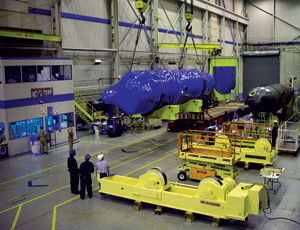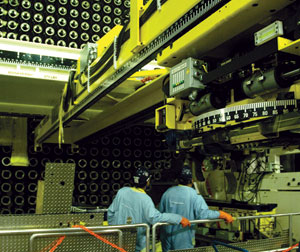On the road to the “nuclear renaissance,” Canada’s nuclear-power industry hit a speed bump. Declining electricity demand has scotched plans to add as much as 7,200 MW of greenfield nuclear powerplants in Ontario. But even as it withdrew applications for eight new reactors at two sites, the country’s largest independent generator pledged to complete refurbishment of two laid-up units on its flagship site and to continue developing new nuclear powerplants in Saskatchewan and Alberta. If built, the plants in those provinces would be western Canada’s first nuclear plants.


On July 23, Bruce Power, Tiverton, Ontario, announced it would withdraw its application to build two new reactors in Nanticoke, Ontario, on the shore of Lake Erie, and four new units on the 2,300-acre Bruce Nuclear Generating Station site in Tiverton. Just last October, Bruce Power Erie Inc. had applied for a site preparation license for up to 3,200 MW of new nuclear capacity. Bruce Power also was in the final year of a three-year environmental assessment for construction of four reactors totaling about 4,000 MW in Tiverton, on Lake Huron.
But even with the cancellations, Bruce Power is continuing one of North America’s largest nuclear refurbishments at the Tiverton site and is actively pursuing permits for new greenfield plants in Alberta and Saskatchewan. Bruce Power is Canada’s first private nuclear generating company, formed in 2001 to operate the Bruce Nuclear Generating Station in Tiverton and to compete in the newly deregulated power market. Its first project is to return four laid-up units to service.
Initial Restart
The eight reactors of Bruce NGS are built in groups of four, known as Bruce A, with units 1-4, and Bruce B, with units 5-8. Between 1995 and 1998, Ontario Hydro, the province-owned utility, placed Bruce A’s four 750-MW CANDU pressurized heavy-water reactors on temporary lay-up to allow it to concentrate resources on other reactors in its fleet. Bruce Power took over the site with a long-term lease in 2001 and promptly invested $549 million to restart Bruce A units 3 and 4 for their remaining life, estimated at about 12 years. Both were restarted by January 2004.
The four Bruce B and two Bruce A units now were generating about 4,700 MW, but Bruce Power was still 1,500 MW short of its commitment to the Ontario Power Authority to generate 6,200 MW of baseload nuclear power. In October 2005, to meet the commitment, the company launched the Bruce A Refurbishment for Life Extension and Continued Operations Project. Its goals are to enhance Bruce A’s safety, to increase the station’s capacity to generate electricity and to enable it to continue operating through 2043.
The $3.62-billion program’s original scope included replacing Bruce A’s 32 steam generators, replacing the fuel channels in units 1, 2 and 3 and upgrading the balance of the plant by replacing transformers containing PCBs and modifying or replacing turbines to allow additional power generation, among other things. A 2007 scope expansion to replace Unit 4’s fuel channels boosted the project’s total cost to $4.96 billion.
Refurbishment Begins
Work began in October 2005 to refurbish and restart Bruce A units 1 and 2. By March 2006, the worker headcount was swelling quickly toward an anticipated 1,700 peak in mid-2007.
AMEC NCL Ltd., Toronto, is the program manager. The contractors include Atomic Energy of Canada Ltd., which is supplying and installing new fuel channels and associated components to retube units 1 and 2; SNC-Lavalin, installing the steam generators and disposing of the old ones; Babcock & Wilcox Canada Ltd., which is...


Post a comment to this article
Report Abusive Comment